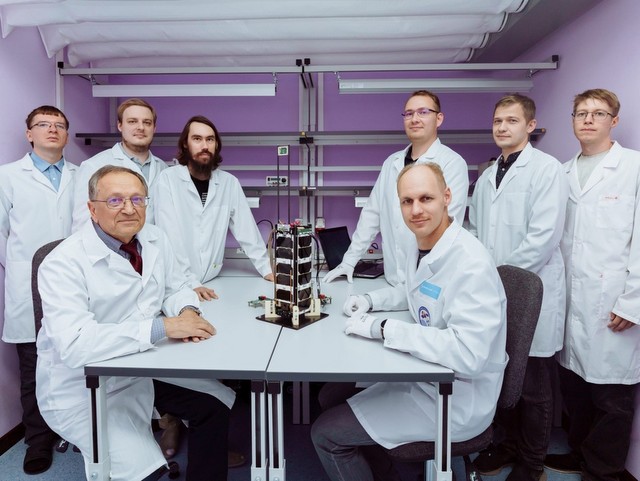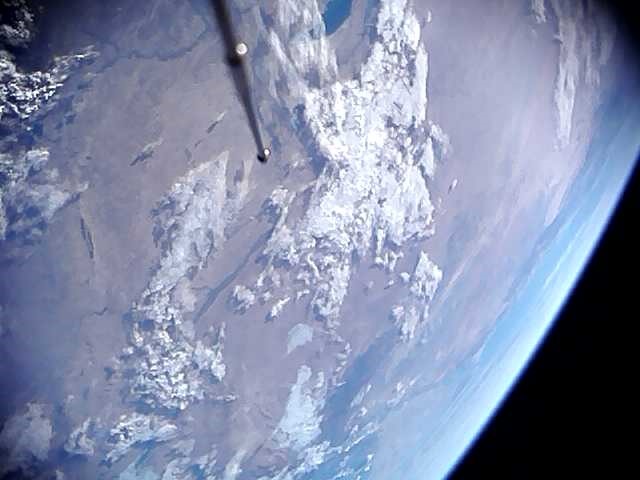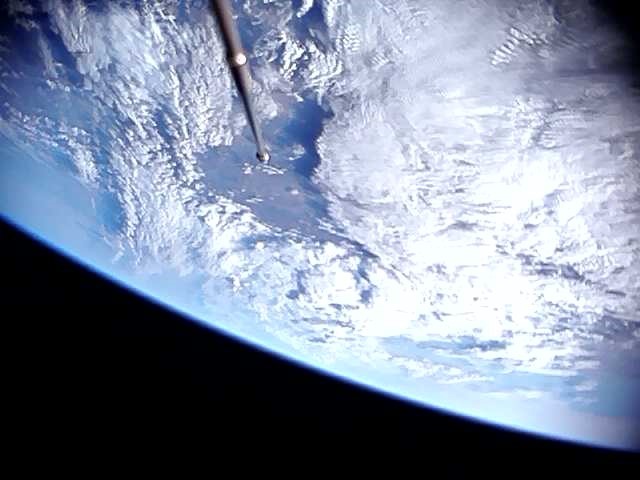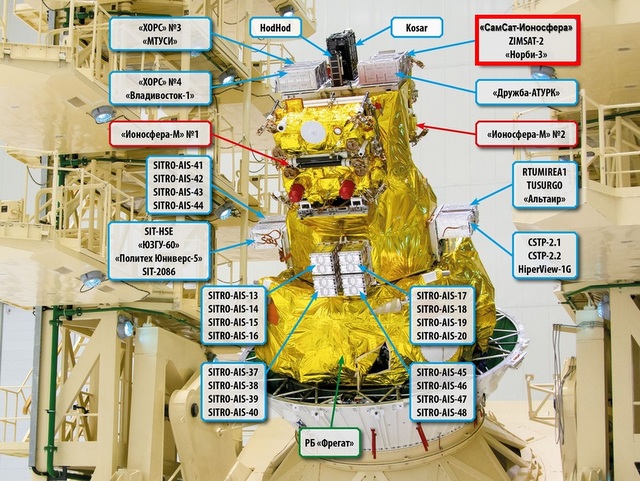On November 05, 2024, at 3:18:40 a.m. Samara time, the Soyuz-2.1b launch vehicle with the Fregat booster was launched from the Vostochny Cosmodrome.
The booster was equipped with transport and launch containers accommodating 51 small spacecraft created by Russian universities and private companies. One of the nanosatellites, the SamSat-Ionosphere, was manufactured using a platform developed by the Inter-University Department of Space Research at Samara University.
It was early morning in November when the SamSat-Ionosphere nanosatellite first entered the radio visibility range of the Samara University's Mission Control Centre (MCC) and confirmed normal operation of the spacecraft and successful deployment of its extendable elements – the antennas and sensor booms. A dedicated system with a locking device was used to secure the deployable elements during transportation and launch. The device was patented by the staff of the Inter-University Department of Space Research at Samara University and included in the list of major achievements of the Russian scientists in 2022 by the Russian Academy of Sciences.
Immediately after launch into orbit, the spacecraft underwent extensive tests. During the first months, flight design tests were successfully completed, confirming the structural and operational characteristics of the nanosatellite's body elements and onboard systems in space flight conditions. The accuracy of the developed onboard and ground software was confirmed. The technology for assessing the orbital parameters of the nanosatellite based on the Doppler change in the frequency of the emitted radio signal was put to use.
Next, the SamSat-Ionosphere began to implement its research program. The set of research instruments on board the SamSat-Ionosphere includes three tools:
· a plasma parameter sensor developed at the Institute of Applied Physics of the Russian Academy of Sciences,
· a scientific navigation signal receiver developed at Samara University,
· a boom-mounted magnetometer.
Each of the scientific instruments confirmed successful activation and operation.
Since early February 2025, the SamSat-Ionosphere nanosatellite has been providing real-time monitoring of the magnetic field over the territory of Russia and transmitting daily scientific measurements to its customer, the Institute for Applied Geophysics named after E.K. Fedorov, whose management is content with the quality of the obtained data. Operation of the experimental plasma parameter sensor is being analyzed by scientists from the Institute of Applied Physics of the Russian Academy of Sciences who conceived the idea of this unique instrument. Experiments are planned to research the ionosphere using the SURA multi-purpose test bench for the study of near-Earth and outer space (SURA is an experimental facility for heating the ionosphere located near Nizhny Novgorod).
In addition to the onboard service systems and scientific instruments, the satellite carries a low-resolution technological camera that can take photographs of the Earth's surface and outer space.
The SamSat-Ionosphere nanosatellite participated in international amateur radio broadcasts dedicated to the Cosmonautics Day on April 12 and Victory Day on May 9. The greetings were received by amateur radio stations in twenty-two countries: Russia, the Republic of Belarus, Georgia, China, India, Japan, the Czech Republic, Austria, Spain, Italy, France, the United States, Great Britain, Brazil, Peru, Greece, Poland, Moldova, Taiwan, the Philippines, Indonesia, and Cuba.
Over the past year, the Nanosatellite Mission Control Centre of the Inter-University Department of Space Research at Samara University conducted more than 2,200 communication sessions with the SamSat-Ionosphere nanosatellite and received approximately 50,000 messages from it containing scientific and service information. Senior students, master's students, and postgraduate students of the department are invited to participate in the communication sessions.
The master’s program student Polina Yakovleva shares her impressions of working at the Mission Control Centre, “At the very beginning of my journey as the Mission Control Centre operator, I was quite nervous. It was scary even to move the mouse while receiving responses from the satellite: what if something goes wrong? But over time, I got the hang of it and began to understand what was going on, learned to notice oddities and peculiarities in the communication session, and even switched the scripts that determined the order of requests to the satellite. Conducting communication sessions is an opportunity for me, still a university student, to try working with a real spacecraft and feel connected to this enormous endeavour.”
For reference:
The SamSat-Ionosphere nanosatellite is the second spacecraft built on the SamSat platform developed, manufactured and tested at the Inter-University Department of Space Research of Samara University. The first SamSat-ION nanosatellite was launched into orbit on June 27, 2023, and enabled flight qualification of the in-house onboard service systems, identifying their shortcomings and taking them into account when designing the SamSat-Ionosphere nanosatellite. Based on the results of the development flight tests, the SamSat-ION nanosatellite was included in the list of the major achievements of Russian scientists in 2023 by the Russian Academy of Sciences.
The latest news on the SamSat-Ionosphere project and current telemetry data from the satellite can be found on the website of the Inter-University Department of Space Research at Samara University: https://spaceresearch.ssau.ru/ru/samsat-ionosphere
 RU
RU  EN
EN  CN
CN  ES
ES 





